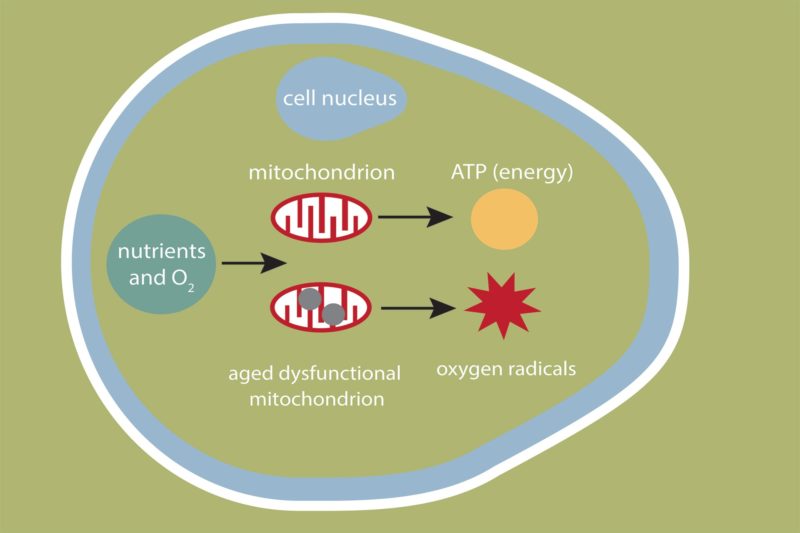
I have called upon Dr. Frank Schönlau to discuss how these antioxidants increase energy and strength. There must be a whole lot more to them than just simple antioxidant action. We have chatted with Dr. Schönlau about bioflavonoids in five previous columns dating back to 2003 (2-6).
Dr. Frank Schönlau received degrees in chemistry and biochemistry in 1992 at the University of Münster, Germany. He researched protein anti-cancer drugs in the framework of a European Community research programme “Europe against Cancer” and achieved his Ph.D. in 1995.
At the Institute of Experimental Dermatology, University Clinics of Münster Germany, Dr. Schönlau investigated chronic inflammatory processes, wound healing, vascular disorders and angiogenesis.
In 1999, Dr. Schönlau joined Horphag Research as director for scientific communication. He has published scores of research articles in peer-reviewed international basic science and medical journals on the role and efficacy of Pycnogenol® in various pathologies.
Passwater: Dr. Schönlau, we share a profound interest in nutritional bioflavonoids. Mine was initiated by Dr. Albert Szent-Gyorgyi´s Research, who discovered that bioflavonoids had vitamin-like activity. How did you become interested in nutritional bioflavonoids?
Schönlau: My initiation to flavonoids is owed to meeting with Charles Haimoff, the creator of Pycnogenol® pine bark extract and founder of Horphag Research. He was an entrepreneur who believed in health-promoting plants and invested heavily in clinical research to corroborate his case and substantiate health proposals attached to Pycnogenol®.
Passwater: Ahh, yes, I knew Charles Haimoff well. He sponsored much clinical research into nutritional bioflavonoids, as well as medical symposia to educate physicians and scientists. What drew your attention now particularly to French oak wood and its energy and strength health benefits?
Schönlau: Oak tannins, such as ellagitannins, vescalagin, castalagin and, in particular, roburins, display considerable antioxidant potency. These tannins were already present in our diet since ancient times, with food and beverages stored and preserved particularly well in oak wood barrels. People mostly think of wine stored in oak wood barrels. In fact, oak tannins and flavonoids naturally arrest microbial growth, which preserves food or beverages stored in oak wood barrels.
Passwater: True, but there must be more than antioxidant and preservative actions with these compounds that causes them to increase our energy and strength. Is the French oak somewhat different to other oak trees in the world?
Schönlau: There exist indeed different oak species in the world. The French oak tree (Quercus robur) is unique because it produces the complete spectrum of all roburin flavonoids: roburin A, B, C, D and E.
Passwater: That’s great that they are in the oak tree, but what is known about the absorption and metabolism in humans for these compounds? The roburins have plenty of hydroxyl groups and double bonds, which make them exceptional antioxidants. (Please see Figure 1). However, they are large molecules. Are they absorbed well by humans? What is known about the bioavailability of these bioflavonoids extracted from oak wood?

Schönlau: I understand your concern, but not to worry. What we have found is that the microbiota in the human gut changes these large roburin molecules into very bioactive specific small molecules called urolithins. Horphag Research has indeed completely unravelled the bio-active metabolites developing in humans subsequent to consumption of Robuvit®. Among several metabolites we identified, in particular the urolithins, (urolithin A, B & C), three closely related phenolic structures, developing from interactions of roburins with human gut microbiota.

The Robuvit® metabolites are detectable in both blood- and urine-samples collected subsequent to consumption by volunteers. The urolithins represent small size polyphenolic structures, which have considerable antioxidant powers due to abundant unsaturated bonds present in the roburins, as well as in the urolithin metabolites prevailing in the body upon consumption.
Passwater: Do the Robuvit® bioactive metabolites, the urolithins, reach the majority of body tissues?
Schönlau: Robuvit® benefitted all investigated tissues and organs. Particularly Robuvit® metabolite urolithin B is also known to pass the blood-brain barrier.
Passwater: OK, so the compounds in this extract from French oak wood are complex bioflavonoids that prevail as urolithin metabolites in the body. What does Robuvit® oak wood extract, or rather the urolithin metabolites developing from them in the gut, do for the well-being of the consumer?
Schönlau: There are two actions that are of great importance. Of major importance is that the urolithin metabolites accelerate rejuvenation of body cell’s energy powerhouses, the mitochondria. The tiny mitochondria, present in our body cells, process the digested components of the food we've eaten with oxygen to generate adenosine triphosphate (ATP). The latter represents the universal energy “currency” charging all our body cells with energy. Please see Figure 3.

Figure 3 above, simplified for the purpose of illustration, shows a single body cell, with two mitochondria and the cell nucleus. To begin with, mitochondria are definitely the most exotic cells in our body. They are not part of our DNA; they have their own mitochondrial DNA. Mitochondria coexist in mammals like us in symbiosis. Mitochondria process the digested products of the food we eat with oxygen to generate a universal energy “currency”: ATP. Because mitochondria generate energy from oxidizing food-stuffs, they themselves suffer cumulative oxidative harm over time, eventually to an extent at which they generate more oxidative stress than energy. When oxidative damage to a mitochondrion affects energy generation, the mal-performant mitochondrion is disassembled, followed by new assembly.
A newly built mitochondrion in replacement provides much more energy, which is the mechanism behind the energy expansion identified with Robuvit® in diverse clinical studies such as in a triathlon and other afore mentioned studies on chronic fatigue. The mitophagy process, the frequency of mitochondrial renewal, defines how much energy a person has at his or her disposal.
Passwater: Now you are talking my language. I think we all can use more natural energy these days. Not only a reserve of overall energy, but increased energy in every cell to drive the millions of biochemical reactions needed for optimal health. What is the second important health benefit?
Schönlau: Of equal importance is that Robuvit® also increases gene expression of several genes involved in encoding ribosomal proteins. The resulting increase in production of ribosomes regulates skeletal muscle mass by increasing protein synthesis.
Passwater: Most of our readers are familiar with the actions and importance of mitochondria, but not as many are familiar with ribosomes. DNA and mitochondria get most of the attention these days, but ribosomes are the workhorses that actually build the proteins from the DNA blueprints. As DNA provides the blueprints for making and repairing us, and mitochondria are the energy factories within cells, ribosomes are the protein factories within cells. Each cell may contain as many as 10 million ribosomes. Each ribosome can produce up to 200 proteins per minute. Excellent descriptions of the makeup and workings of ribosomes can be found on the British Society for Cell Biology website (7) and Wikipedia (8).
Schönlau: The urolithins resulting from Robuvit supplementation upregulate certain genes encoded in our DNA to stimulate ribosome production within the cells, thus increasing protein production when needed. Please see Figure 4.
Passwater: Please give our readers an idea of the health benefits verified in clinical studies from these properties of Robuvit.
Schönlau: Horphag Research initiated a study with volunteers, who supplemented with Robuvit®, followed by subsequent gene expression monitoring. This may appear a bit technical, but actually served to pinpoint which body tissues respond to supplementation with Robuvit® oak wood extract (9).
Passwater: Which body tissues did you discover to respond particularly formidably in response to supplementation with Robuvit®?
Schönlau: This study discovered that Robuvit® stimulates generation of ribosomes in body cells.
This is greatly beneficial because ribosomes assemble all new proteins our body requires: antibodies, collagen, enzymes, muscle fibre, hair and thousands of other proteins. Because Robuvit® helps build more ribosomes, an increased protein demand can be satisfied faster, such in case of wound healing. In the same instance ribosomes assemble antibodies, required hormones and thousands many more proteins. Interestingly, ribosomes build other ribosomes.

production when needed. (Figure courtesy of Dr. Frank Schönlau.)
Passwater: Then to put it simply, Robuvit® contributes to gaining muscle mass faster after training, due to the beefed-up protein assembly capacity.
Schönlau: You are absolutely right! It is for this reason that Robuvit® was also considered an adaptogen, because it empowers the body to adapt faster to challenging situations. An adaptogen represents a natural substance considered to help the body adapt to stress.
If you catch a cold, as an example, Robuvit® will help deploy antibodies faster and in greater numbers, because the more abundant ribosomes allow for greater antibody assembly. This is the reason why Robuvit® is considered an adaptogen, because it empowers body tissues to adapt more rapidly, such as by filling urgent supply gaps faster.
The adaptogenic merits are further exemplified in a controlled study which demonstrated that alcohol intoxication did not affect liver enzyme alterations as much as it did in an untreated control group. (10)
Passwater: One of our most active organs is the liver. Would you suggest that Robuvit® might benefit liver function in view of hepatic challenges?
Schönlau: Indeed, studies support liver health improvements. A clinical study demonstrated that supplementation with Robuvit® helped protect and restore hepatic health subsequent to a one-off alcohol intoxication. Judged from liver enzyme counts, Robuvit® protected the liver with significantly better liver values on alanine-transferase and gamma-glutamyl transferase (10,11). Hepatic health improvement was further concluded from lowered homocysteine values, which rose to original values after two weeks discontinuation of Robuvit® supplementation.
Passwater: Would you have a clinical example which would illustrate and corroborate what you are saying about greater adaptability?
Schönlau: Clinical studies point to liver health improvement, such as with aforementioned healthier liver enzyme counts. Hepatic enzyme counts returned to normal healthy values and harmful homocysteine decreased as results of supplementation with Robuvit®. Robuvit® was dubbed an adaptogen because Robuvit® oak extract enables the body to swiftly fill supply gaps, owed to the greater protein assembly capacity, attributed to more abundant protein-assembling ribosomes.
Passwater: This may be of great interest to athletes as it may help athletes perform better, recuperate better and gain muscle faster! Tell us a bit about your current experience with Robuvit® in the sports arena. What have you undertaken so far in sport research?
Schönlau: There is indeed a study pointing to elevated performance with Robuvit® in a triathlon. This was a controlled clinical trial, with total 61 recreational athletes of both genders, aged 30-40 years. Athletes were assigned to either supplementation with Robuvit®, or the control group for two weeks. The athletes who supplemented with Robuvit® readily outperformed the control group, void of Robuvit®, in all three disciplines of the triathlon (12).
Passwater: Please give us more details about such studies. How did they outperform?
Schönlau: At baseline, 31 recreational sports-men and -women in their 30s, on average required 26:46 minutes to run a 5 km distance. After two weeks of supplementation with Robuvit®, the same distance was run within 23:28. The control group meanwhile did not present with significant performance improvements.
Passwater: Let’s point out that the improved performance is natural and not due that of to a Performance Enhancing Drug (PED). The energy is due to younger, more energy-packed mitochondria and improved muscle strength from ribosome regulation!
Through the decades, I have worked with professional sports teams, World Champion Boxers, World Champion Bodybuilders and individual professional and amateur athletes in several disciplines. It is important for athletes to know the difference between natural nutritional improvements that are both legal and safe, and those that aren’t. As examples, balanced protein and multi-vitamins improve the performance over those who are deficient in them and they are legal and not banned. The World Anti-Doping Agency (WADA) lists performance enhancing substances that are banned (http:/list.wada-ama.org). Since Robuvit has been shown to improve athletic performance, should competitive athletes be concerned about disqualification?
Schönlau: Definitely not! Horphag provides a Doping Substances Certificate (F0465) that certifies that NO substances on the WADA list are manufactured or stored in their facilities. The certificate states in part: “We, Biolandes Arômes and Horphag Research, certify that the above product is not manufactured with, processed with, exposed to, nor does it contain any of the substances on the Prohibited Substances List published by the World Anti-Doping Agency (WADA), available at http://list.wada-ama.org/. We certify that no substances on the WADA List are manufactured, packed or stored in our facilities. We certify that our products are delivered in sealed tamper evident packaging, which prevents contamination during transportation and storage with substances on the WADA list. The above product is therefore also compliant with the banned substances contained in Annex A of NSF Guideline 306, and can safely be included in products and formulations under the NSF Certified for Sport® evaluation program…”
Passwater: Well, that clears that up. You know, there are so many people out there struggling with a general lack of energy, who can´t wait to the moment they come home and lie down on the couch. Does Robuvit® lend energy to normal people of this kind as well?
Schönlau: There are indeed quite a few observational studies, from diverse research groups, which conformably point to significant energy elevation in people at mid-age as well as higher age, too (13).
Passwater: Tell us more about this study in regard to how Robuvit® helped energize older folks.
Schönlau: Robuvit® was demonstrated in a study to help overcome fatigue in individuals in medical convalescence. (14)
Passwater: Could you give our readers an impression of science available related to fighting fatigue and regaining energy?
Schönlau: Actually, there exist series of clinical investigations which point to regained energy in fatigued individuals with Robuvit® (14-16).
Passwater: Who did you find benefitting particularly well from supplementing with Robuvit® in your clinical investigations?
Schönlau: A group of 90 chronically fatigued individuals benefitted from supplementing with Robuvit®. This is particularly astounding because these individuals experienced fatigue already since half a year, finding no solution until they participated in a Robuvit® study (15).
Passwater: That’s amazing, this surely will thrill our readers. How about people who experience drained energy all the day long?
Schönlau: Recently published studies further corroborate the energizing properties of Robuvit®. Another study, which will be published soon, reveals that Robuvit® helps individuals to overcome “burn-out” better, with another publication demonstrating greater energy in convalescence. (14)
Passwater: Convalescence is extremely important, not only for long-term survival…but for short-term recovery. The clinical researchers reported several improvements in biomarkers of recovery. They found that the standard Karnofsky scale biomarkers were significantly improved by Robuvit®; they were higher at day 10 and at 3 weeks in comparison with controls (P<0.05) with an average final difference of 3.8%. The improved recovery resulted in a more active lifestyle and exercise patterns in Robuvit®-supplemented subjects.
Also, the supplementation with Robuvit® in subjects after a significant flu episode appears to improve particularly the fatigue aspect linked to convalescence.
Thank you once again, Dr. Schönlau. Robuvit® appears to be the ideal antidote for our busy times. We’ll have to chat more about this important supplement later.Note: The views and opinions expressed here are those of the author(s) and contributor(s) and do not necessarily reflect those of the publisher and editors of WholeFoods Magazine.References 1. Passwater, R.A. “Prolonging longevity. An interview with Professor Bruce Ames.” WholeFoods (February 2019). www.wholefoodsmagazine.com/ columns/vitamin-connection/prolonging-healthy-aging/ 2. Passwater, R.A. “The Science of Pycnogenol” WholeFoods (August 2003) 3. Passwater, R.A. “Pycnogenol: A New, Natural Solution for Joint Health An interview with Frank Schönlau, Ph.D.” WholeFoods (November 2008).www.wholefoodsmagazine.com/columns/vitamin-connection/pycnogenol-new-natural-solution-joint-health/ 4. Passwater, R.A. “Healthy Arteries and Pycnogenol: An Interview with Frank Schönlau, Ph.D.” WholeFoods (February 2011). www.wholefoodsmagazine.com/columns/vitamin-connection/healthy-arteries-and-pycnogenol-interview-frank-schönlau/ 5. Passwater, R.A. New Understandings about Pycnogenol’s Myriad of Health Benefits, Part 1. An Interview with Frank Schönlau, Ph.D.” WholeFoods (November 2013). www.wholefoodsmagazine.com/columns/vitamin-connection/new-understandings-about-pycnogenols-myriad-health-benefits-part-1/ 6. Passwater, R.A. “New Understandings about Pycnogenol’s Myriad of Health Benefits, Part 2. An Interview with Frank Schönlau, Ph.D.” WholeFoods (December 2013) www.wholefoodsmagazine.com/columns/vitamin-connection/new-understandings-about-pycnogenols-myriad-health-benefits-part-2/ 7. https://bscb.org/learning-resources/softcell-e-learning/ribosome/. 8. https://en.wikipedia.org/wiki/Ribosome). 9. Natella F, Leoni G, Maldini M, Natarelli L, Comitato R, Schönlau F, Virgili F, Canali R. “Absorption, metabolism, and effects at transcriptome level of a standardized French oak wood extract, Robuvit®, in healthy volunteers: pilot study.” J Agric Food Chem 15: 443-453, 2014. 10. Pellegrini L, Belcaro G, Dugall M, Corsi M, Luzzi R, Hosoi M. “Supplementary management of functional, temporary alcoholic hepatic damage with Robuvit®” Minerva Gastroenterol Dietol 62(3): 245-252, 2016. 11. Belcaro G, Gizzi G, Hu S, Dugall M, Pellegrini L, Cornelli U, Cesarone MR, Trignani M, Maione C. “Robuvit® (French oak wood extract) in the management of functional, temporary hepatic damage. A registry, pilot study” Minerva Med 105: 41-50, 2014. 12. Vinciguerra MG, Belcaro G, Cacchio M. “Robuvit® and endurance in triathlon: improvements in training performance, recovery and oxidative stress” Minerva Cardioangiol 63: 403-409, 2015. 13. Országhová Z, Waczulíková I, Burki C, Rohdewald P, Ďuračková Z. “An Effect of Oak-Wood Extract (Robuvit®) on Energy State of Healthy Adults - A Pilot Study” Phytother Res 29: 1219-1224, 2015. 14. Ippolito, E., Belcaro, G., Luzzi, R., et al., “Robuvit®: improvement of fatigue in medical convalescence” The Journal of Sports Medicine and Physical Fitness 2018 May;58(5):678-83. DOI: 10.23736/S0022-4707.17.08158-0. 15. Belcaro G, Cornelli U, Luzzi R, Cesarone MR, Dugall M, Feragalli B, Hu S, Pellegrini L, Ippolito E. “Improved management of primary chronic fatigue syndrome with the supplement French oak wood extract (Robuvit®): a pilot, registry evaluation” Panminerva Med 56: 63-72, 2014. 16. Belcaro G, Cornelli U, Luzzi R, Ledda A, Cacchio M, Saggino A, Cesarone MR, Dugall M, Feragalli B, Hu S, Pellegrini L, Ippolito E. “Robuvit® (Quercus robur extract) supplementation in subjects with chronic fatigue syndrome and increased oxidative stress. A pilot registry study” J Neurosurg Sci 59: 105-117, 2015.










